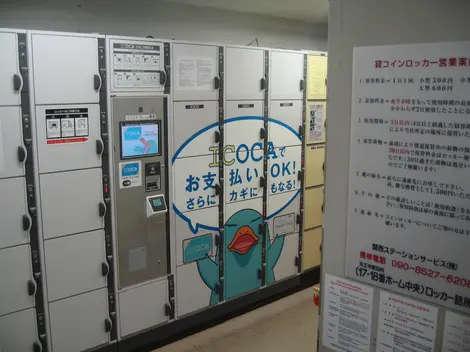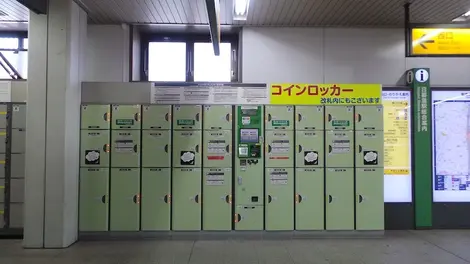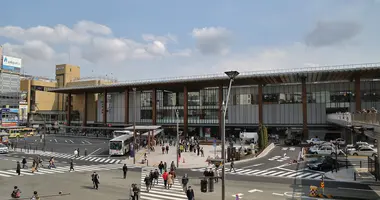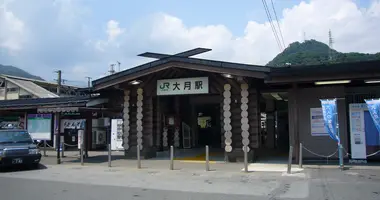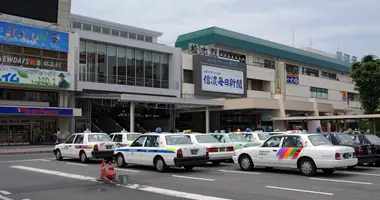Station Lockers in Japan: A Comprehensive Guide for Travelers
Traveling around Japan is an incredible experience, but hauling heavy luggage can quickly put a damper on your adventures. Fortunately, coin lockers are a convenient storage solution found in most Japanese train stations, allowing you to stow your bags and explore cities hands-free. In this guide, we'll cover everything you need to know about using station lockers in Japan, including types, sizes, usage tips, and recommended services to make your journey as smooth as possible.
Types and Sizes of Coin Lockers in Japan
Japanese station lockers come in two main varieties: key-operated and keyless. Key-operated lockers are straightforward to use - simply insert your coins, lock the door, and keep the key with you. These lockers typically only accept 100-yen coins, with fees ranging from 200-400 yen for small sizes, 400-600 yen for medium, and 600-800 yen for large.
Keyless lockers, on the other hand, are operated via a touch panel. You can check availability, lock and unlock the locker, and pay using either cash or an IC card like Suica or PASMO. Cash payments require entering a PIN code to unlock, while IC card users can simply tap their card on the reader. Note that IC cards from other regions, such as ICOCA and TOICA, are often accepted as well.
A newer, smartphone-enabled locker known as SPACER is also becoming available in major stations like Shinjuku, Shibuya, and Osaka. While still limited, SPACER allows remote availability checks, advance reservations, cashless payments, and even key sharing with others via an app. As of August 2023, the system is Japanese-only but plans to add multi-language support.
Coin lockers come in four main sizes to accommodate different luggage types:
- Small (300-400 yen): Ideal for bags, backpacks, and small shopping hauls. Average dimensions: 257-317mm H x 355mm W x 575mm D.
- Medium (500-600 yen): Fits carry-on bags and small suitcases. Average size: 550mm H x 355mm W x 575mm D.
- Large (700-800 yen): Suitable for standard suitcases. Typical dimensions: 880mm H x 355mm W x 575mm D.
- Extra-Large (900 yen): Can hold two carry-ons or one suitcase plus a bag, but availability is limited. Average size: 1,153mm H x 355mm W x 575mm D.
How to Use Japanese Coin Lockers: A Step-by-Step Guide
Using key-operated lockers:
Depositing luggage:
- Find an empty locker with a key.
- Place your bags inside and close the door.
- Insert exact change in 100-yen coins.
- Turn the key left to lock, then remove the key.
Retrieving items:
- Locate your locker and insert the key.
- Turn right to unlock and open the door.
If you exceed the base rental period:
- Insert the key fully into the lock.
- Add the required excess fee in 100-yen coins.
- Turn right to unlock and retrieve your belongings.
For keyless lockers with touch panels (often available in English, Chinese and Korean):
Depositing luggage:
- Select "Deposit" on screen, then choose an available locker number.
- Place bags inside and firmly close the door until it locks and a light flashes.
- Select cash or IC card (Suica, PASMO, etc.) payment.
- For cash: insert coins/bills and collect your receipt with PIN code. For IC: tap your card on the reader and take the receipt.
Retrieving items:
- Select "Remove" on the touch panel.
- Choose cash/IC payment, matching your original method.
- Enter PIN or tap IC card on reader to unlock.
- Open the door and collect your belongings.
If you go over time with a keyless locker, the additional fee will be charged by re-entering your PIN and inserting cash, or automatically deducted from your IC card when tapped.
Coin Locker Fees, Time Limits and Important Rules
Rental fees are charged per calendar day, not 24-hour periods. Staying past midnight means paying for an additional day, even if you originally deposited your items late the previous evening. Typical costs are:
- Small lockers: 300-400 yen/day
- Medium lockers: 400-500 yen/day
- Large lockers: 500-800 yen/day
Maximum storage time is usually 3-4 days. After this limit, the management company will open the locker and confiscate your items, holding them for up to a month. You'll need to pay both the regular locker fees plus a separate storage charge to get your belongings back.
Prohibited items in lockers include:
- Cash, securities, valuables like precious metals or electronics
- Animals
- Hazardous materials (explosives, toxic substances, etc.)
- Illegal goods like weapons
- Stolen property
- Odorous, dirty, easily damaged, or unsuitable items
Note that while food isn't explicitly banned, anything perishable or strongly scented should not be left in lockers.
Troubleshooting Common Coin Locker Issues
If you find yourself without 100-yen coins, look for a nearby change machine. These usually exchange 500 yen coins and 1,000 yen bills, but not larger denominations. When change machines aren't available, try buying a drink from a vending machine to break a bill. Keyless touch panel lockers may also accept 1,000 yen notes directly.
Exceeding your paid storage time means additional fees to retrieve your luggage. For key lockers, insert coins to match the balance shown before unlocking. With keyless cash lockers, enter your PIN and pay the extra amount. IC card users will have the balance deducted when tapping to unlock.
If you lose your locker key or PIN, contact the management company immediately - their info is posted near the lockers. You'll need to fill out a loss report and show ID, plus potentially cover a 1,000-2,000 yen key replacement fee on top of any unpaid locker charges.
For lost IC card locker keys, first check with the station's lost and found to see if it was turned in. If your card had an auto-charge feature, visit the station office, fill out a form, and show ID to suspend the card and prevent unauthorized use.
Even if you forget your exact locker location, having the key or receipt can help. Key tags usually show the locker number and location, while receipts list the number, location, start time, payment amount and management contact details. Show these to a station staff member for assistance.
When all lockers are full or you can't find one that fits your luggage, consider using Coin Locker Navi to search for availability at nearby stations and tourist sites. Suica locker search machines at major Tokyo stations like Shinjuku and Ikebukuro can also help locate open lockers in real-time. As a last resort, try a baggage storage counter, luggage delivery service, or the increasingly popular ecbo cloak app to temporarily store your bags at shops and facilities across Japan.
Recommended Services for Finding and Reserving Coin Lockers
Coin Locker Navi: This Japanese site allows you to search for coin lockers by location across Japan. It provides details on locker numbers, sizes, and prices, plus real-time vacancy info for major stations close to popular spots like Tokyo Disney Resort.
Suica Coin Locker Search: Found in Tokyo, Shinjuku, Ikebukuro and Shinagawa stations, these machines display color-coded availability for Suica lockers on a station map. Green means many vacancies, orange indicates limited space. Touch an icon to check specific locker sizes and quantities, plus get directions from your current spot.
Smartphone apps like ecbo cloak: A shareable storage solution connecting users with shops and facilities that have secure space to spare. Simply register, find a spot, select your drop-off/pickup times, and pay via credit card. Rates are fixed at 500 yen/day for regular bags and 800 yen/day for suitcases and large items. App and site available in English and Chinese.
Alternative Luggage Storage Solutions in Japan
If coin lockers aren't meeting your needs, you have a few backup options:
Temporary baggage storage counters: Major stations like Tokyo and Kyoto have manned luggage rooms where you can safely stow bags for the day for around 500-700 yen per piece. Same-day delivery to your hotel may also be available for an added 1,000 yen or so.
Hands-free travel and courier services: Companies like Yamato Transport offer door-to-door luggage forwarding between airports, hotels, shops and homes. Most hotels can arrange these services for you at the front desk. Costs depend on distance and delivery speed (same-day, next-day, etc.) but average 1,500-2,000 yen per bag.
Pros and cons: Storage counters are convenient for odd-sized items and peace of mind, but have limited hours and require claiming your bags same-day. Delivery services allow greater flexibility and free you up completely, but take more advance planning and can get pricey for multiple pieces. Lockers fall somewhere in between - affordable and readily available, but with size/time restrictions.
Locations of Coin Lockers in Major Stations Across Japan
Here's where to find station lockers in some of Japan's biggest travel hubs:
- Tokyo Station: Lockers concentrated in the Marunouchi Central Gate area (inside and outside the paid area), plus the underground B1F passage and Yaesu South Gate.
- Shinjuku Station: Banks of lockers all over the sprawling station, with key areas being the East and West Exit ticket gates, underground plazas, and passageways.
- Ueno Station: Both inside JR ticket gates and outside near Keisei Ueno Station. Look along the Asakusa Exit passage for many large sizes.
- Osaka/Shin-Osaka Stations: Clusters around the Central and South ticket gates, Sakurabashi Exit, and throughout the station interior.
- Kyoto Station: On the 2F walkway near the tourist information center, outside the Central and Chuo Exits, and along the station's south side.
- Sapporo Station: In the underground passages connecting the various exits, with particular concentration at the North and South gates.
- Sendai Station: Throughout the West Exit area on floors 1-3, and immediately outside the ShinkansenCentral Exit.
No matter where your Japanese travels take you, station lockers are a reliable ally in your quest to explore the country hassle-free. By combining their affordability and convenience with a few well-chosen luggage services, you can roam from Tokyo to Kyoto to Narita as lightly and leisurely as you please.
For more advice on transporting luggage in Japan and navigating the train system, check out our dedicated guides. Happy trails!


